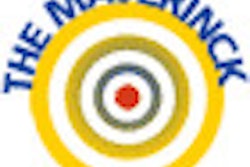
Practice makes perfect when it comes to reporting, it seems. New research among experienced radiologists at a district general hospital in northwest England suggests those who do more reporting sessions are significantly more cost-effective than those who work fewer sessions.
"Consultants [senior doctors] working 12 PAs [programmed activities] were more efficient than those working fewer PAs," noted William Hedges, a researcher at the department of radiology at Royal Blackburn Hospital in Blackburn. "The reason for this is unclear and further research is needed."
Higher workloads and fewer resources are becoming a major problem, and, as a result, there is increasing pressure to raise efficiency, he told delegates at the 2012 U.K. Radiological Conference (UKRC). Studies have found that PACS and voice-recognition software have helped increase productivity, but this may not be enough.
"Management of radiology departments is an area that may yield further improvements, and differences in efficiency in workload between consultants working different numbers of hours has not been examined before," commented Hedges, whose co-author was Dr. Shah Khan, from the same department.
Reporting workload has often previously been assessed by the number of images reported, but complex imaging studies such as CT and MRI have made that method obsolete, according to Hedges. Reporting a radiograph of a wrist takes much less time and effort than a whole-body CT, for instance. Therefore, relative value units (RVUs) have been developed in North America and Australia, and these compare imaging studies and give them scores proportional to reporting time, allowing workloads to be calculated more accurately.
Data came from the Royal Blackburn's electronic records between April 2010 and March 2011. For each imaging study reported by the 14 consultant radiologists in the department, a score was given, ranging from 1.5 RVUs for plain films of the extremities and chest or abdomen to 5 RVUs for a plain film skeletal survey, intravenous urogram, or any mammography and ultrasound examination. A total of 10 RVUs was given for CT scans of the thorax and neck, while 20 RVUs were given for all MRI examinations. Twenty-seven RVUs were given for CT scans of the colon, chest, abdomen and pelvis, and to CT enterograms and urograms.
On average, radiologists spent 42.5% of their time on nonreporting activities, such as procedural work, teaching, multidisciplinary team meetings, administration, and supporting professional activities. RVUs could be given for these activities, even though they're essential for the proper running of a radiology department, Hedges noted.
Crude workload was calculated by dividing total RVUs per consultant by the total PAs (or sessions) they work. Net workload was calculated by dividing total RVUs by the PAs they spent reporting. There was a large difference between these scores, and the proportion of reporting PAs to nonreporting PAs varied between consultants, he explained.
"Relative value units enable us to compare the workload of reporting staff with different case mixes, enabling us to analyze efficiency," he commented. "Modern radiologists must perform many duties other than reporting imaging studies. Previous methods of assessing crude workload don't take these important activities into account. Using RVUs and calculating net workload from reporting PAs enables a more representative assessment of radiologist workload than has previously been possible."
The authors conceded that the study sample was relatively small and the findings may not apply to other centers.



















